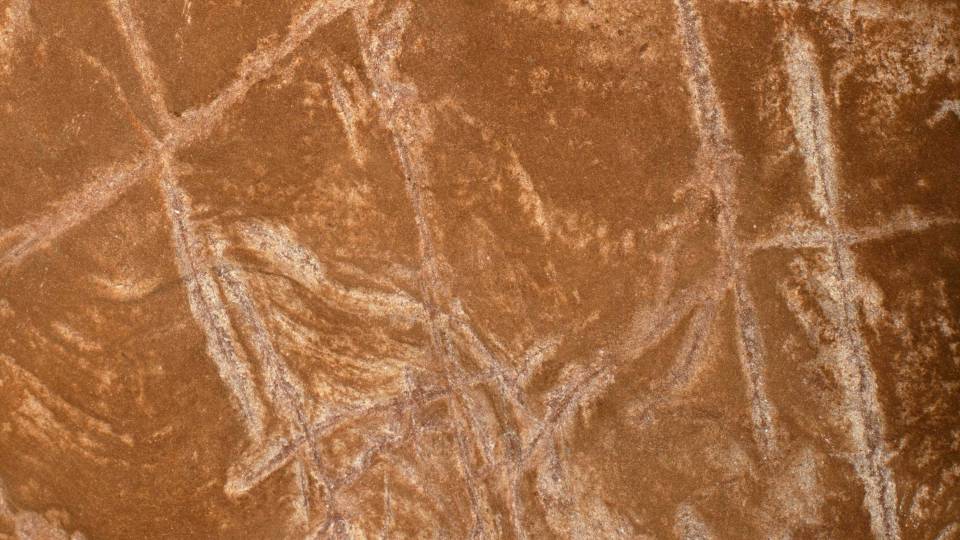Keneiloe Molopyane (right), a scientific researcher from the University of the Witwatersrand in South Africa, explores the Rising Star cave system with a team member. Molopyane is a colleague on the project with Princeton's Agustín Fuentes (photo below).
A team of researchers including Princeton anthropologist Agustín Fuentes has found, deep in a cave system in South Africa, that an extinct, small-brained species of ancient human relatives buried their dead and used symbols, a discovery that could alter our understanding of human evolution.

Agustín Fuentes, a Princeton anthropology professor and a National Geographic Explorer, stands on land above the Rising Star caves.
Led by paleoanthropologist and National Geographic Explorer-in Residence Lee Berger, the group discovered the bodies of several Homo naledi adults and children in the Rising Star cave system near Johannesburg. The contexts in which the bodies were found led the researchers to interpret that they were intentionally buried. The naledi interments predate the earliest known burial of modern humans (Homo sapiens) by at least 100,000 years.
Further, the team found lines and shapes engraved on cave walls, including cross-hatchings and other geometric shapes that appear to have been etched with repeated scrapes with a pointed or sharp tool. The symbols are similar to those made by larger-brained Neanderthals and early Homo sapiens and were considered a major cognitive development in human evolution.
The National Geographic Society, which funded the research, released the findings June 5. Scientific papers on the work will be published in the Journal eLife and are available in preprint through BioRxiv.
“These recent findings suggest intentional burials, the use of symbols, and meaning-making activities by Homo naledi,” Berger said. “It seems an inevitable conclusion that in combination they indicate that this small-brained species of ancient human relatives was performing complex practices related to death. That would mean not only are humans not unique in the development of symbolic practices but may not have even invented such behaviors.”
Agustín, a professor in Princeton’s Department of Anthropology and a National Geographic Explorer, was the on-site biocultural specialist in the Rising Star expedition.
“To be inside the caves — inside the world of Homo naledi — is not only a life-changing adventure, but what we’ve uncovered forces us to rethink a whole set of assumptions about hominins and human evolution,” Fuentes said. “Much of what we assumed was distinctively human, and distinctively caused by having a large brain, may not be either of those things. Burial, meaning-making, even ‘art’ could have a much more complicated, dynamic, non-human history than we previously thought.”
Berger and his team, which included archaeologist and biological anthropologist Keneiloe Molopyane, geologist Tebogo Makhubela, and paleoanthropologist John Hawks, found the first H. naledi fossils in a narrow Rising Star cave chamber in 2013.
Agustín said another decade or more of work remains to be done at the site. More than 100 researchers will be engaged on the project over the next few years. “I am looking to be back underground there in 2024 and working to get Princeton undergraduates and graduate students involved,” he said.
Jill Tiefenthaler, the National Geographic Society’s chief executive officer, said the society “is proud to support Lee, Agustín, Keneiloe, and the rest of their team who are making significant contributions to science and exploration in their pursuit of answers about our ancient past.”


This is a close-up view of a crosshatch engraving over a fossil, discovered in a passage in the Rising Star cave system.
Image of a tool-shaped rock from a cave at the Rising Star site.





